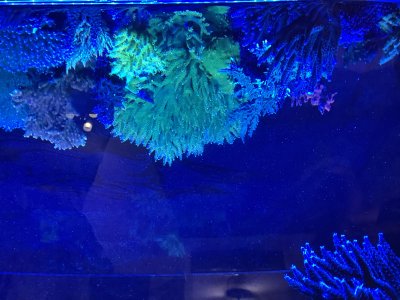five.five-six
Well-known member
Well, several of my acro are just out of control. For the past few years, my biggest ongoing maintenance routine has been trimming overgrown acropora colonies. Roughly every 9 months I have to cut out enough that it takes 2-3 5 gallon buckets to bring it all to the LFS. Yea, metal halide lighting sucks like that.
Anyways, I have 2 really thick colonies. One of them grew over a very nice clam and killed it with shade. Last weekend I filled one 5 gallon bucket but couldn’t really get at these 2 colonies with bone cutters. I did get a 15 pound rock out and cut a bunch off with hand saw but most of my rock structure has fused itself together with encrusted SPS, basically now it’s just one 200 pound piece of rock.
I’m afraid to use a hammer and chisel, I think the energy would transfer through the rock and crack my tank. I’m thinking of some sort of dental drill or perhaps using a reciprocating airsaw though I’m afraid the oils would contaminate the tank. The saws are pretty cheep at HF though.
I think this would work but I’d just have to figure out how to protect the tank from the oil. Perhaps run denatured alcohol through it and lube it with vegetable oil or something that wouldn’t be really detrimental to the tank.
Anyways, I have 2 really thick colonies. One of them grew over a very nice clam and killed it with shade. Last weekend I filled one 5 gallon bucket but couldn’t really get at these 2 colonies with bone cutters. I did get a 15 pound rock out and cut a bunch off with hand saw but most of my rock structure has fused itself together with encrusted SPS, basically now it’s just one 200 pound piece of rock.
I’m afraid to use a hammer and chisel, I think the energy would transfer through the rock and crack my tank. I’m thinking of some sort of dental drill or perhaps using a reciprocating airsaw though I’m afraid the oils would contaminate the tank. The saws are pretty cheep at HF though.
I think this would work but I’d just have to figure out how to protect the tank from the oil. Perhaps run denatured alcohol through it and lube it with vegetable oil or something that wouldn’t be really detrimental to the tank.


